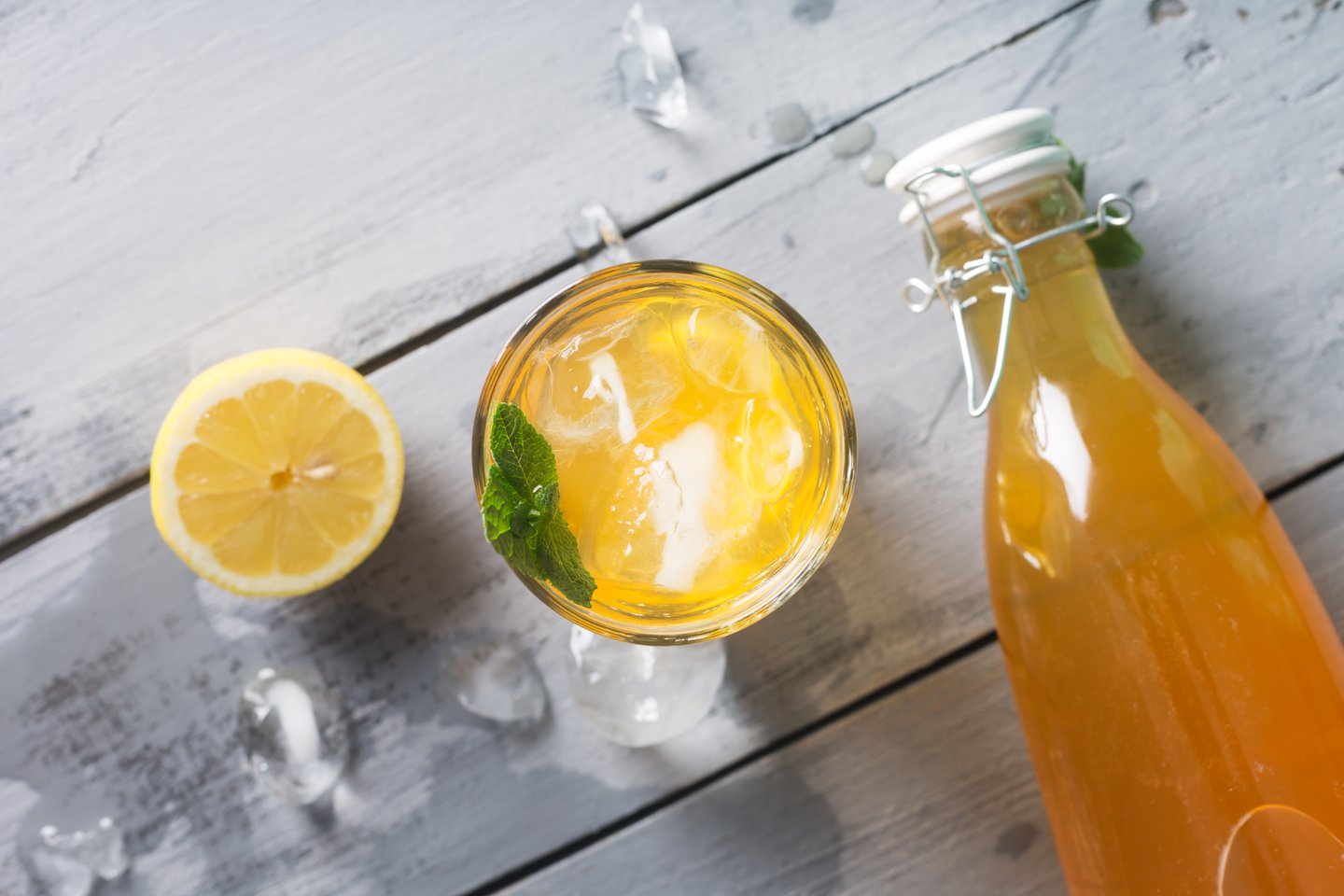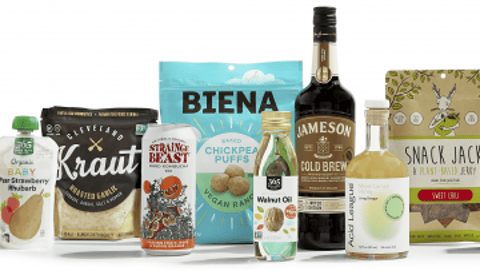Four things to know about kombucha
1 A KOMBUCHA FOR EVERYONE
Early adopters swear by kombucha’s health claims, particularly the gut-benefiting probiotics it produces during fermentation. But kombucha isn’t just for the health-obsessed, explains Shelley Balanko, senior vice-president at The Hartman Group. “What’s great about the category is there is a kombucha for everyone, even those looking to wean off soft drinks, as it can provide some of that sweetness and fizzy mouth-feel.” These offerings add fruit juice and a bit of sugar to offset kombucha’s natural acidity, and come in a rainbow of colours. Toronto-based Greenhouse Juice Co. offers an Ultraviolet Kombucha in a bright purple hue (thanks to blue matcha) that is made with organic pineapple, giving it a tropical flavour. While “during the pandemic we’ve seen a rise in beverages formulated with functional benefits in mind,” Greenhouse’s co-founder and director of community Hana James says “taste remains the No. 1 reason a customer repeat shops.”
2 LATEST BUZZ
Because it’s fermented, kombucha contains traces of alcohol. By extending the fermentation, some brands are upping the booze content, bringing kombucha to the liquor store with a hard cider-like offering. In the U.S., for the 52 weeks ending Dec. 26, 2020, NielsenIQ data shows off-premise hard kombucha sales surged 128%; and Whole Foods Market ranked “boozed-up booch” as a top 10 trend for 2021. Canadian makers are getting in on the party, too. Calgary’s Wild Tea Kombucha launched a kombucha cider line with 5% or 6% alc./vol in ginger lime, blueberry hibiscus and mango passionfruit. “We want to show people kombucha can also be fun,” says co-founder Emily Baadsvik.
3 SALES SURGE
Once a small percentage of the single-serve drink category, kombucha has become the largest at some natural grocers. “Demand for it has skyrocketed over the past decade,” says Digs Dorfman, founder and co-owner of The Sweet Potato in Toronto. “We now sell more of it than single-serve soda and juice combined.” With eight feet of refrigerated space (and 50 linear feet of shelving) dedicated to kombucha, the top SKUs sell “just shy of 2,000 units a year,” says Dorfman. The Sweet Potato has shifted strategy in its bi-weekly flyer, from education about the fermented beverage to price promotion. “We see a big uptick when we put a top brand on sale, as customers purchase a few weeks’ worth of it,” he says. Greenhouse Juice Co.’s Hana James says retailers should consider merchandising kombucha alongside fruits and vegetables, rather than only in the refrigerated drinks aisle. “This space makes the product more accessible to a wider variety of customers and is a natural basket build for those shopping fresh, organic produce,” she says.
4 GROOVY HISTORY
Fizzy and functional, kombucha is made by adding a “symbiotic culture of bacteria and yeasts” (called a “SCOBY”) to sugared tea and letting it ferment. During this process, the sugar converts into ethanol and acetic acid, giving kombucha its tart tang. While its origins are debated, one popular bit of folklore says it’s named after Dr. Kombu, a Korean physician who made the “cha” (tea in Japanese) as a curative for Emperor Inkyo of Japan in 414 A.D. In the 1960s, kombucha was part of the hippie food movement, with home brewers in California giving it the nickname “groovy tea.” But manufacturers have only become interested in the beverage in recent years, amid rising consumer interest in digestive health.
This article appeared in Canadian Grocer's June/July 2021 issue.


